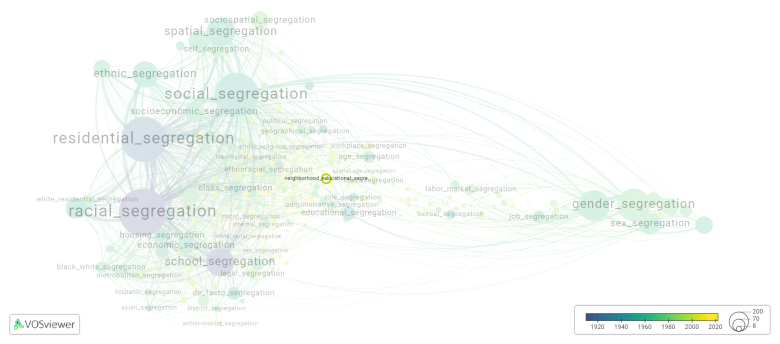Neighborhood educational segregation
Date and country of first publication[1]
2010
South Korea
Definition
Neighborhood educational segregation refers to the unequal distribution of educational opportunities and resources across different neighborhoods or residential areas. This segregation is often characterized by significant disparities in the quality of schools, access to advanced courses and programs, availability of extracurricular activities, and overall educational outcomes.
One of the primary factors contributing to neighborhood educational segregation is residential segregation, where different communities are inhabited by people of different racial, ethnic, or socioeconomic backgrounds. Racial and socioeconomic inequalities can result in concentrated poverty in certain neighborhoods, leading to underfunded schools with limited resources and support. This, in turn, perpetuates inequities in educational outcomes, as disadvantaged students are more likely to attend schools with fewer resources and experienced teachers.
The impact of neighborhood educational segregation can be significant. Students from segregated neighborhoods often face limited exposure to diverse ideas and perspectives, resulting in a narrower worldview. Education is a key determinant of future opportunities, and the disparities resulting from neighborhood educational segregation can greatly hinder the social mobility of students from marginalized communities.
Efforts to address neighborhood educational segregation involve various strategies. These include school desegregation initiatives, such as busing programs and magnet schools that aim to promote diversity and reduce segregation. Additionally, policies to redistribute educational resources and funding more fairly can help address disparities in neighborhoods with under-resourced schools. Providing targeted support and interventions for students from disadvantaged neighborhoods can also help mitigate the impact of educational segregation.
Overall, reducing neighborhood educational segregation is crucial to promoting equal access to quality education for all students, regardless of their residential location. By addressing the disparities in resources and opportunities, society can work towards a more equitable and inclusive educational system.
See also
Related segregation forms
Neighborhood educational segregation is frequently discussed in the literature with the following segregation forms:
spatial segregation, educational segregation, multigroup segregation

This visualization is based on the study The Multidisciplinary Landscape of Segregation Research.
For the complete network of interrelated segregation forms, please refer to:
References
Notes
- ↑ Date and country of first publication as informed by the Scopus database (December 2023).
Neighborhood educational segregation appears in the following literature
Lim U., Kim D.H. (201). Do Birds of a Feather Flock Together? Exploring the Geography of Educational Segregation in Seoul, Korea. Studies in Regional Science, 40(2), 479-494. https://doi.org/10.2457/srs.40.479
